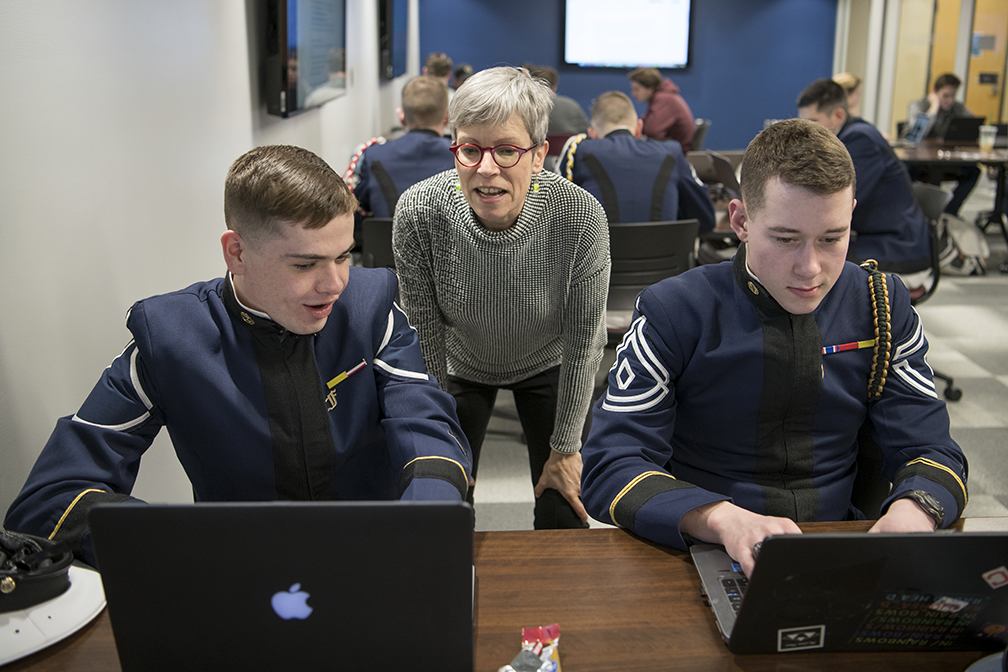Study Urges Integration of Arts and Humanities with Science, Engineering, and Medicine
July 13, 2018

In May, the National Academies of Sciences, Engineering, and Medicine held a public briefing to release a new report that analyzes the benefits of undergraduate and graduate experiences that effectively integrate the arts and humanities with fields in STEMM (science, technology, engineering, mathematics, and medicine).
The report, “The Integration of the Humanities and Arts with Sciences, Engineering, and Medicine in Higher Education: Branches from the Same Tree,” was the culmination of a two-year study that examined the evidence behind the assertion that more integrated educational experiences can better prepare graduates for life and work.
“Public discourse has increasingly reflected a tension about whether higher education should be focused primarily on developing practical workforce skills or more broadly on fostering an enlightened, engaged citizenry,” said David Skorton, secretary of the Smithsonian Institution, and chair of the study committee, in his public briefing remarks in May. “But evidence suggests that integrating the STEMM fields with the arts and humanities is linked to learning outcomes that support both of those goals, and that serves students well in many aspects of life.”
During the public briefing, study committee member E. Thomas Ewing, a professor of history in the Virginia Tech College of Liberal Arts and Human Sciences, noted that the title of the report came from a letter Albert Einstein wrote to the YMCA in 1937.
“All religions, arts, and sciences are branches of the same tree,” Einstein had penned. “All these aspirations are directed toward ennobling man’s life, lifting it from the sphere of mere physical existence and leading the individual toward freedom.”
“The metaphor of branches, we found, is a useful way to think about this study,” Ewing said. “Reaching up and out — connected, yet differently.”
Such a connection point — a trend in higher education — occurs when a single course or program combines knowledge and study from many disciplines in the arts, humanities, sciences, technology, engineering, mathematics, and medicine. With this approach, professors guide students to make associations among these subjects. The committee looked at outcomes of this integration within more than 200 programs and courses at several universities and colleges throughout the United States.
The findings suggest positive evidence in learning outcomes for integrated approaches, such as improved written and oral communication, content mastery, problem-solving, teamwork, ethical decision-making, and empathy. In addition, graduates who can incorporate these concepts with knowledge in real-world settings are of high value to both employers and higher education institutions.
Even with a limited evidence base, the committee’s opinion is the proof that institutions should support and test an integrated approach to arts and humanities with STEMM in higher education. To move forward, the report advocates that campus collaborations from departments to employers consider creating and implementing new program models and programs. There needs to be an evaluation and measurement of the effects and outcomes upon student learning and workforce readiness
For colleges and universities that already offer integrated arts, humanities, and STEMM curriculums, the report indicates that these institutions sustain and continue monitoring such courses.
Such programs exist at Virginia Tech.
“My involvement with the National Academies Study Group has run in parallel with similar discussions at Virginia Tech over the last several years, including the introduction of an integrated general education program through Pathways and the interdisciplinary curricular projects related to the Destination Areas and Strategic Growth Areas,” Ewing said.
Pathways is a new general education program in which students engage in ethical reasoning and intercultural and global awareness across their studies. The program provides inclusive classroom experiences to address the needs and challenges of diverse populations of students. It supports learning theory and best practices to deliver a curriculum steeped in real-world application and connections among a variety of perspectives and ways of knowing.
Ewing’s involvement with the study group has helped shape his contributions to one such project. Called Data in Social Context, it builds on his earlier work in revising the Quantitative and Computational Thinking requirement in Pathways and the discussion of a Data Matters/Decisions Matter set of courses related to the Data and Decisions Destination Area.
“I look forward to further opportunities to connect discussions of curricular reform at Virginia Tech with national conversations about the future of undergraduate, graduate, and professional education such as those sponsored by the National Academies,” Ewing said.
Written by Leslie King



